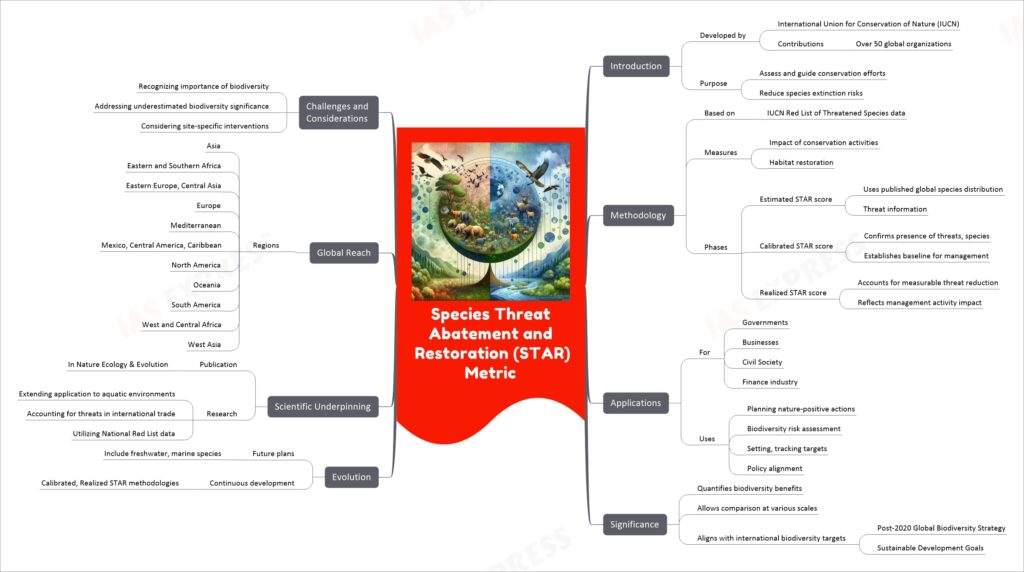Species Threat Abatement and Restoration (STAR) Metric

The Species Threat Abatement and Restoration (STAR) metric, developed by the International Union for Conservation of Nature (IUCN) with contributions from over 50 global organizations, is a pioneering tool designed to assess and guide efforts in conserving biodiversity and reducing species extinction risks. Utilizing data from the IUCN Red List of Threatened Species, the STAR metric measures the impact of conservation activities and habitat restoration in specific areas. It operates in three phases: estimating, calibrating, and realizing STAR scores, which correspond to initial assessments, confirmation of threats and species, and the impact of management activities, respectively. This metric is crucial for governments, businesses, and other stakeholders in planning nature-positive actions, assessing biodiversity risks, and aligning with international biodiversity targets. With continuous development and future plans to include aquatic environments, the STAR metric represents a significant step forward in quantifying and comparing the benefits of different conservation actions on a global scale.

